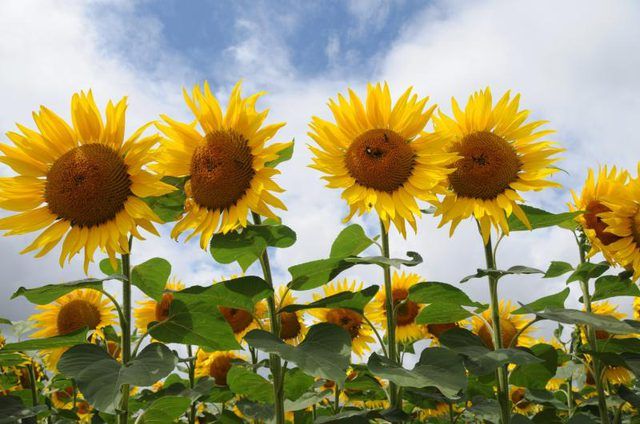Bulbs
Flower Basics
Flower Beds & Specialty Gardens
Flower Garden
Garden Furniture
Garden Gnomes
Garden Seeds
Garden Sheds
Garden Statues
Garden Tools & Supplies
Gardening Basics
Green & Organic
Groundcovers & Vines
Growing Annuals
Growing Basil
Growing Beans
Growing Berries
Growing Blueberries
Growing Cactus
Growing Corn
Growing Cotton
Growing Edibles
Growing Flowers
Growing Garlic
Growing Grapes
Growing Grass
Growing Herbs
Growing Jasmine
Growing Mint
Growing Mushrooms
Orchids
Growing Peanuts
Growing Perennials
Growing Plants
Growing Rosemary
Growing Roses
Growing Strawberries
Growing Sunflowers
Growing Thyme
Growing Tomatoes
Growing Tulips
Growing Vegetables
Herb Basics
Herb Garden
Indoor Growing
Landscaping Basics
Landscaping Patios
Landscaping Plants
Landscaping Shrubs
Landscaping Trees
Landscaping Walks & Pathways
Lawn Basics
Lawn Maintenance
Lawn Mowers
Lawn Ornaments
Lawn Planting
Lawn Tools
Outdoor Growing
Overall Landscape Planning
Pests, Weeds & Problems
Plant Basics
Rock Garden
Rose Garden
Shrubs
Soil
Specialty Gardens
Trees
Vegetable Garden
Yard Maintenance
Using Sunflowers as Companion Plants
Using Sunflowers as Companion Plants. Provide shade for heat-sensitive, low-growing vegetable plants and create a trellis for plants that like to climb sunflowers (Helianthus spp.). While a useful companion plant for many vegetables, sunflowers aren't the perfect companions for every member of the garden. You can find both annual and perennial...

Provide shade for heat-sensitive, low-growing vegetable plants and create a trellis for plants that like to climb sunflowers (Helianthus spp.). While a useful companion plant for many vegetables, sunflowers aren't the perfect companions for every member of the garden. You can find both annual and perennial sunflower species. Annuals grow in all climates during the summer, while perennial sunflowers grow in U.S. Department of Agriculture plant hardiness zones 3 through 9, depending on the variety.
Increase Corn Crops
Growing sunflowers interspersed with a corn (Zea mays) patch is a smart way to improve overall production and it could help reduce damage from armyworm infestations. Larval armyworms feed on grass and corn. While companion planting corn with sunflowers won't guarantee against armyworm devastation, having this sunny flower near by can help deter these pests. Both corn and sunflowers need full sun, warm weather and loamy soil.
Shade Cucumbers
Sunflowers get along well with cucumbers (Cucumis sativus), providing shade for these heat-sensitive vegetables. Cucumbers like to climb and will scale a sunflower stalk. To keep them from falling over, drive a stake into the soil near each sunflower and tie it loosely to the stake with string. And it's not just cucumbers that benefit from the sunflowers' shade: other related species, like melons (Cucumis melo) and summer squash (Cucurbita pepo), enjoy the sunflowers' shade.
Separate from Potatoes
Don't grow sunflowers in the potato (Solanum tuberosum) patch. Both sunflowers and potatoes are susceptible to the fungal disease Verticillium dahliae. To avoid creating a perfect environment for this destructive, wilt-causing disease, keep sunflowers and potatoes in separate areas of the garden and avoid rotating sunflowers with potatoes in the same garden bed area.
Attract the Pollinators
Get the bees to your garden with the perennial sunflower variety "Lemon Queen" (Helianthus "Lemon Queen"), which grows in USDA zones 4 through 9. While most sunflowers attract bees, these busy pollinators find this one particularly irresistible. Sunflowers also attract butterflies and birds to the garden, bringing a diverse range of pollinators for your plants.
An Ornamental Companion
You don't have to relegate sunflowers to the edible garden. These bright, attractive flowers add color to cutting gardens and work well in cottage gardens, meadows and border areas. The common annual sunflower (Helianthus annuus) grows up to 10 feet tall, but you have other choices. For a low-growing perennial variety, plant willow-leaved sunflowers (Helianthus salicifolius). There are two types: the 9- to 12-inch-tall perennial cultivar "Low Down," which grows in USDA zones 6 through 9; and the 12- to 15-inch-tall "Willow Mountain," which grows in USDA zones 5 through 9.